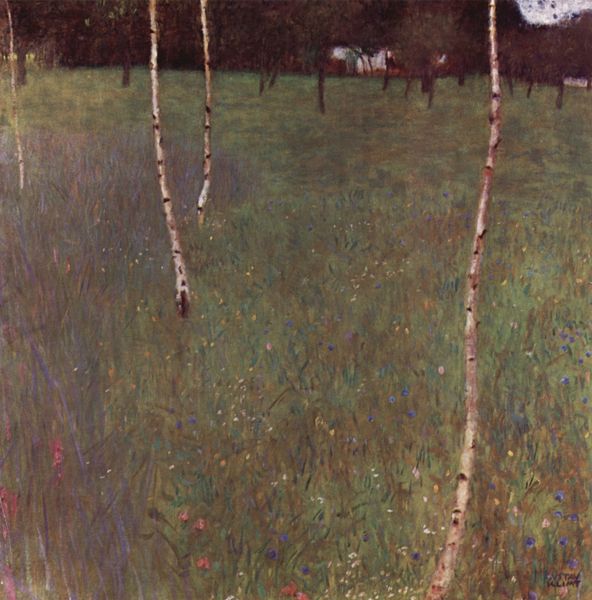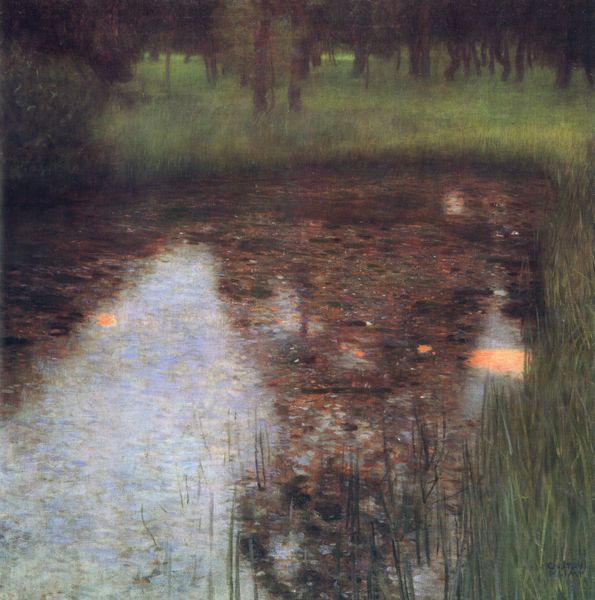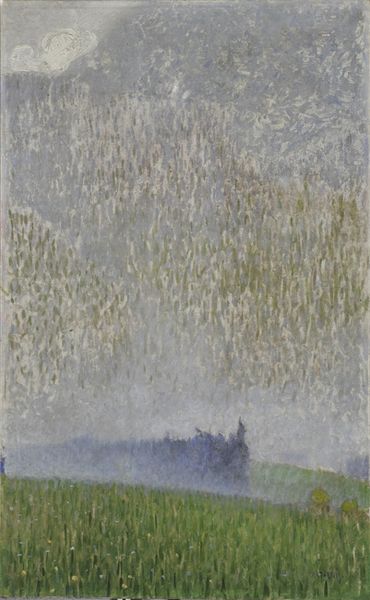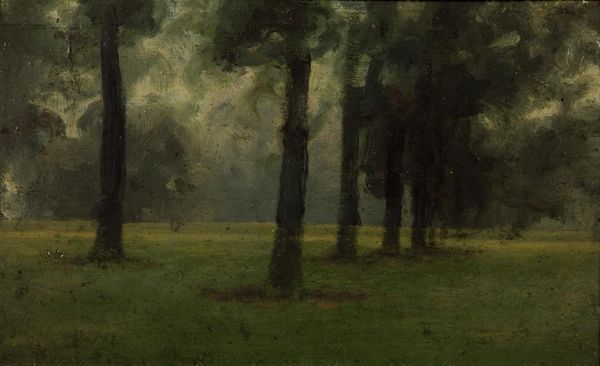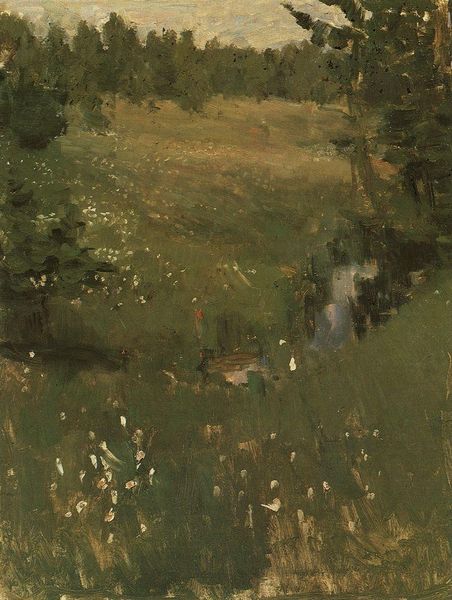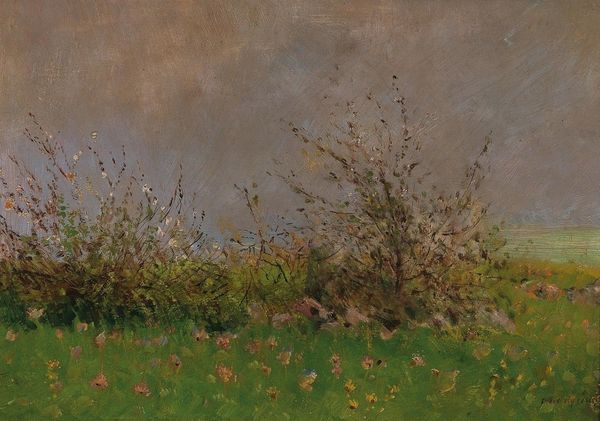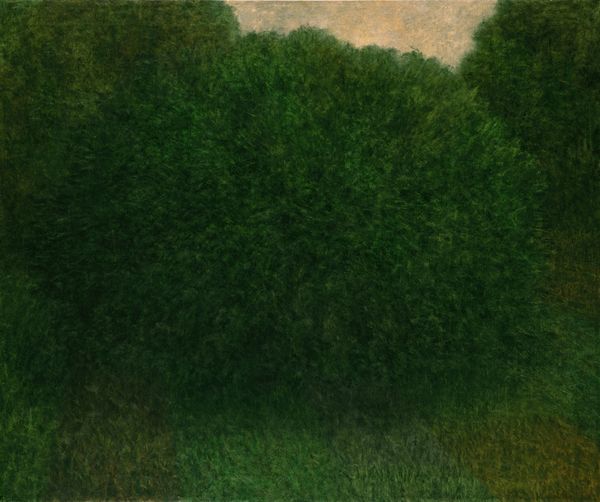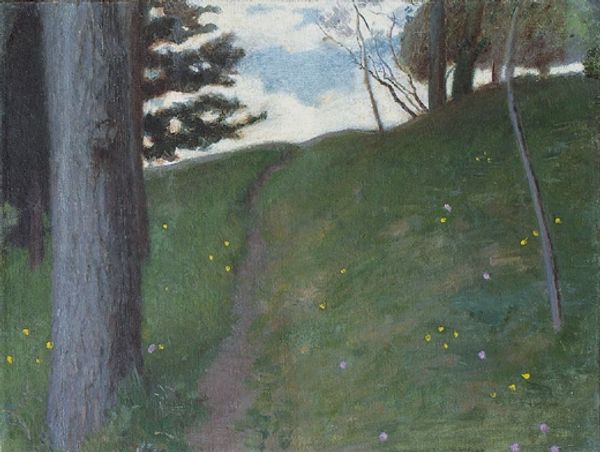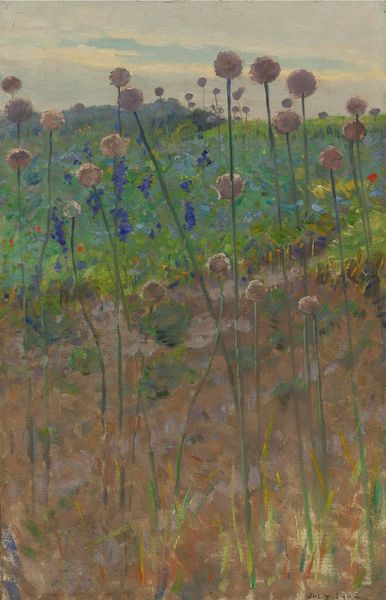
Landscape 1903
0:00
0:00
konstantinosparthenis
National Art Gallery (Alexandros Soutzos Museum), Athens, Greece
Dimensions: 86 x 55.5 cm
Copyright: Public domain US
Curator: A very subtle painting greets us here. This oil on canvas, titled "Landscape," was painted by Konstantinos Parthenis in 1903. Editor: There's an enveloping sense of melancholy, wouldn't you agree? The muted colors, particularly the blues and greens, create a kind of twilight atmosphere. Almost suffocating. Curator: I feel a tranquility in it; perhaps because of the way Parthenis applied the paint en plein air. There's a naturalism, even if the color palette seems dampened. He was trying to catch the fugitive nature of the light, as he saw it. The little touches of color that he observed around him—little blossoms, maybe? Editor: I do see some of the wildflowers that pepper the lower field—flecks of resistance almost—but beyond, the trunks are barely sketched out and almost spectral against the darkened sky. There is an element of isolation, a stillness that goes beyond tranquility. Were these the political atmospheres reflected in this painting as Parthenis looked toward his future? What anxieties might he have been grappling with as he considered painting and national identity in a rapidly modernizing Greece? Curator: He certainly wrestled with blending academic traditions and modern approaches. There's this push and pull of realism but also the early stirrings of Impressionism—an inner landscape maybe? The surface, at moments, feels more important than pure representation. He layers these hazy forms, and captures the emotions of a place. Editor: Perhaps, and even though it appears conventional at first glance, there's a questioning. Maybe we feel it precisely because of the subtle ways that Parthenis resists clear categorization, this landscape asks questions about belonging, about the nature of seeing. And in 1903, that was an activism in itself: who gets to see and shape the idea of what a nation looks like. Curator: Absolutely, it is about visibility, making something—or some perspective—present. Even when wrapped in darkness or shrouded in fog. This scene is deeply evocative and much bigger than it first appears, the way the artist used light as texture or medium feels fresh today, like a question of identity that remains open to the eye. Editor: Exactly! So, the real landscape becomes a mental space to contend, maybe not with a specific issue, but with this constant feeling of finding your own place within an overwhelming time.
Comments
No comments
Be the first to comment and join the conversation on the ultimate creative platform.
